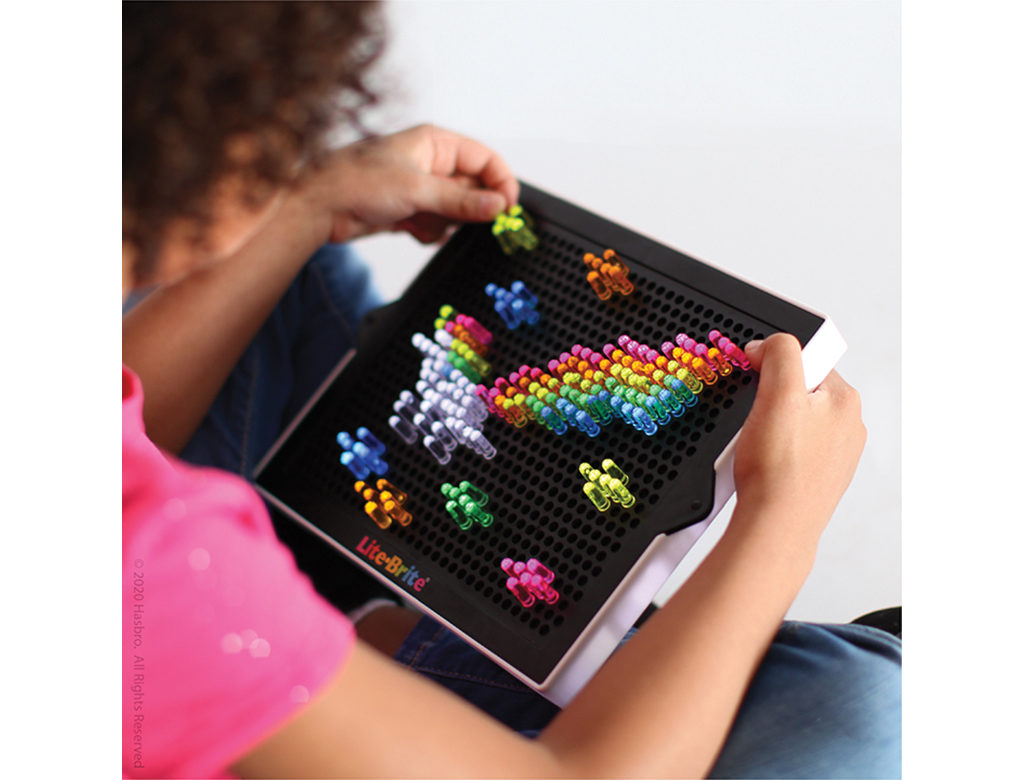By Martin Brochstein
One pattern emerging during the pandemic is consumers’ hunger for the familiar, whether comfort foods, retro music, classic early video games, trusted CPG brands of yesteryear or toys, among many others. It’s a matter of trust and longing for a simpler time when you didn’t have to think twice about a trip to the supermarket, going to a restaurant, or attending a concert or sporting event.
It’s not a new phenomenon; sales of products carrying beloved evergreen licenses typically spike during times of crisis as they gain favor with nostalgia-driven consumers.
That point was underscored recently when Just Play acquired the Slinky and Shrinky Dinks brands in an auction of Alex Brands’ assets, with plans

for new products by fall to mark Slinky’s 75th anniversary. Licensing is a business that’s built on emotion – whether love for a character or favorite movie, fandom for a sports team, trust in a brand, attachment to a particular lifestyle or fashion brand, or the warm and fuzzy feeling you get from something from your past.
The global licensing business reached $292.3B in global revenue in 2019, according to the recently published Annual Global Licensing Study, released last month by Licensing International. Toys account for $35.8B, or 12% of that total. (The study can be downloaded for free by members of Licensing International at www.licensinginternational.org; non-members can get a copy for $975.)
While there’s no doubt that the worldwide Coronavirus pandemic is currently impacting global business of all sorts, the Study shows that the licensing industry entered 2020 with a strong, productive, and profitable business model that runs through the toy business as much as any.
Even as people around the world were living under the effect of shelter-in-place and other directives that decimated retail sales, the power of trusted brands and well-known licenses have been all around. For example, families have busied themselves with licensed puzzles and games, and consumers around the world have emerged with cloth face coverings sporting children’s and adult characters, sports logos, trademarked sayings, fashion brands, artwork and any number of other designs and motifs that showcase their individuality.
So there are a number of forces driving the popularity of some toys of yesteryear. One is a general sense of nostalgia. Another is the power of traditional business cycles. It has long been a truism in the toy world that lines are ripe for re-introduction about 20 years after the original – enough time for one generation of fans to become parents and bring the things they loved to their own children. The same goes for licenses.

But companies walk a fine line between playing to those who remember and updating the brands to attract a new cadre of fans. For example, Basic Fun!, in re-launching Care Bears products at Walmart this month, revamped packaging to feature bright colors and a collectible coin and added expressions to the formerly expressionless characters. It also is introducing a rounded version of the traditionally rectangular Lite-Brite to give it a trendy design.
“Many companies do well with these sub-brands, but if they fell off the earth and nobody made them again nobody would skip a beat,” says Basic Fun CEO Jay Foreman, who last re-launched Care Bears while CEO of Play Along in the early 2000s. “It really is up to those companies that take on the retro brands to give the retailers and consumers a reason to support them because in many cases, at the end of that day, there isn’t always enough business there to make anyone care. You have to make them [consumers and retailers] care.”
To make consumers care, companies must be careful not lose the features and design that made the property or product popular in the first place. For example, TastemakersArcade1Up changes the appearances of some characters for its Arcade1Up arcade-style cabinets for 8-bit videogames of yesteryear, but their movements closely track those of the original game.
“Because the machines have authentic artwork, gameplay and controls, they hit a certain nostalgic nerve bringing people back to a simpler time” which is attractive to homebound consumers, says CEO Scott Bachrach.
There’s no doubt that we’re in one of those times in which the classics play especially well. The challenge is to leverage them in a way that extends them to new audiences.
Marty Brochstein is responsible for Licensing International’s information resources, as well as its educational efforts. He also oversees the association’s information operations, including the NewsLinks daily news and headline service, and coordinates all industry research. He speaks regularly at conferences and seminars around the world on a wide range of licensing- and retail-related issues, writes regularly on licensing topics, and is widely quoted on issues related to licensing, marketing and branding.

